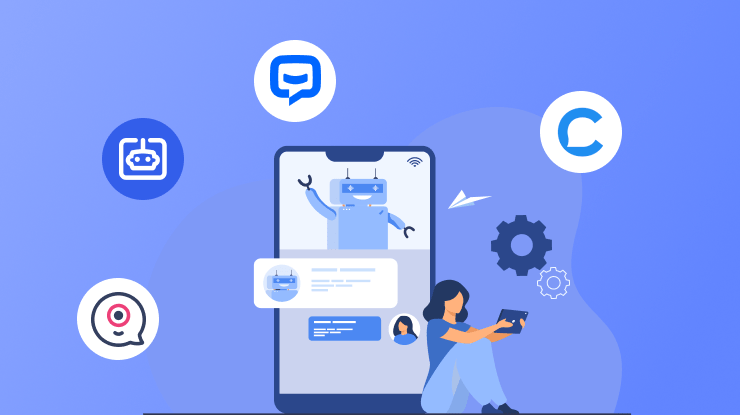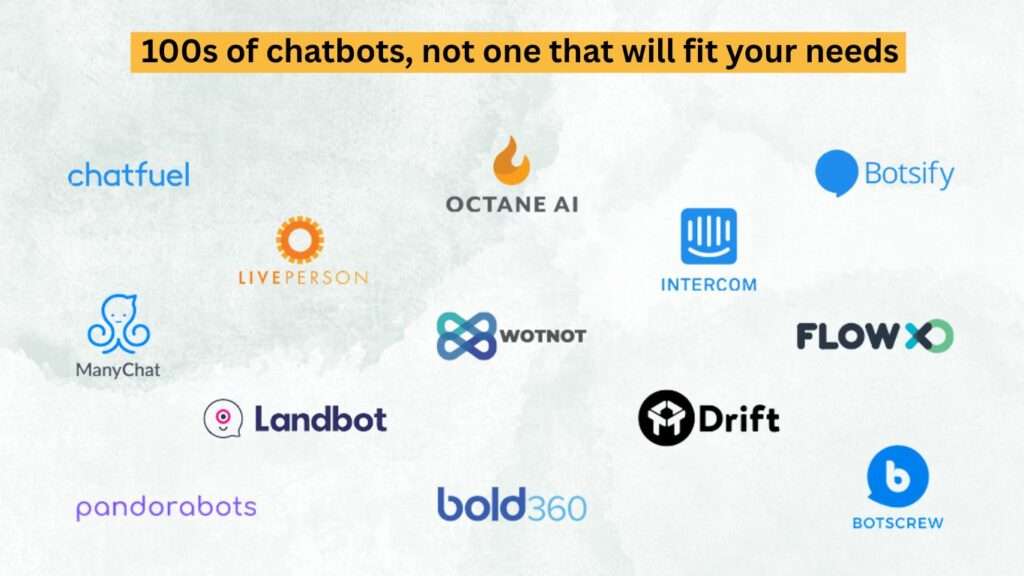Elevate customer engagement, streamline processes, and boost profitability with your chatbot ROI formula for success today!

In the dynamic landscape of customer engagement, businesses are increasingly turning to chatbots as powerful tools to enhance interactions, streamline processes, and ultimately, boost their return on investment (ROI). In this blog, we’ll explore the intricacies of calculating the ROI for your chatbot, examining the factors that influence it, and dissecting specific scenarios such as customer service inquiries, product sales, and customer retention.
Factors that Affect Chatbot ROI: Navigating the Variables
Before diving into the calculations, let’s explore the key factors that can significantly impact your chatbot’s return on investment:
- Implementation Costs:
- Upfront costs for developing and integrating a chatbot, including software, technology, and initial setup expenses.
- Maintenance and Updates:
- Ongoing costs associated with maintaining, updating, and improving the chatbot’s functionality over time.
- Training and Optimization:
- Investment in training the chatbot to understand and respond to user queries accurately, and ongoing optimization efforts to enhance its performance.
- User Adoption and Engagement:
- The degree to which users embrace and actively engage with the chatbot, affects its overall effectiveness.
- Integration with Systems:
- Seamless integration with existing business systems and processes, reducing friction in user interactions.
Now, let’s explore how to calculate your chatbot’s ROI and the specific considerations for different scenarios.
How to Calculate Chatbot ROI: A Step-by-Step Guide
Calculating the ROI of your chatbot involves understanding the gains it generates with the costs incurred. Here’s a step-by-step guide:
- Define Objectives:
- Clearly outline the objectives your chatbot aims to achieve, such as improving customer service, driving sales, or enhancing customer retention.
- Quantify Costs:
- Sum up all costs associated with chatbot implementation, including development, maintenance, updates, training, and ongoing optimization.
- Measure Benefits:
- Quantify the benefits your chatbot provides, such as time saved, increased sales, or improved customer satisfaction. Assign monetary values to these benefits where possible.
- Calculate ROI:
- Use the formula: ROI = (Benefits – Costs) / Costs * 100.
- This formula will give you the percentage return on investment.

Chatbot ROI for Customer Service Inquiries: Efficient Support Pays Off
One of the primary functions of a chatbot is to handle customer service inquiries. Here’s how to assess the ROI in this context:
- Time Savings:
- Measure the time saved by the chatbot in handling routine inquiries compared to traditional customer support methods.
- Reduction in Support Costs:
- Evaluate the decrease in support costs associated with automating common queries, allowing human agents to focus on more complex issues.
- Customer Satisfaction:
- Assess improvements in customer satisfaction by analyzing feedback and response times.
Chatbot ROI for Sold Products/Services: Turning Chats into Conversions
For businesses focused on selling products or services, the chatbot can play a crucial role in the customer journey. Here’s how to evaluate the ROI in this scenario:
- Conversion Rate Increase:
- Measure the percentage increase in conversion rates attributed to the chatbot’s assistance in guiding customers through the sales process.
- Revenue Generation:
- Calculate the additional revenue generated directly through sales facilitated by the chatbot.
- Cross-Selling and Upselling:
- Assess the effectiveness of the chatbot in recommending complementary products or services, contributing to increased order values.
Chatbot Features for Optimal Sales: Tailoring Features for Success
To optimize your chatbot for sales, consider integrating features that enhance the customer’s purchasing journey:
- Product Recommendations:
- Implement a feature that provides personalized product recommendations based on customer preferences and purchase history.
- Seamless Transaction Support:
- Ensure the chatbot can assist customers in completing transactions and addressing any issues or questions they may have during the process.
- Order Tracking and Updates:
- Include functionality that allows users to track their orders and receive updates, enhancing the overall post-purchase experience.

Chatbot ROI for Customer Retention: Building Lasting Relationships
For businesses focused on retaining customers, the chatbot can serve as a valuable tool. Here’s how to gauge the ROI in customer retention:
- Reduced Churn Rates:
- Measure the impact of the chatbot on reducing customer churn rates by addressing concerns and providing proactive support.
- Customer Engagement Metrics:
- Assess customer engagement metrics such as repeat purchases, feedback, and interaction frequency to gauge the chatbot’s influence on customer loyalty.
- Feedback and Improvement:
- Utilize customer feedback obtained through the chatbot to continuously improve its performance and enhance the overall customer experience.
Conclusion
In conclusion, calculating the ROI of your chatbot requires a nuanced approach that considers various factors and scenarios. Whether your focus is on improving customer service, driving sales, or enhancing customer retention, the chatbot’s success lies in its ability to provide tangible benefits that outweigh the associated costs.
As businesses continue to navigate the evolving landscape of customer engagement, understanding and optimizing chatbot ROI becomes a pivotal aspect of success. By leveraging the right features, monitoring key metrics, and consistently refining the chatbot’s performance, businesses can unlock the full potential of this technology and reap the rewards of a substantial return on investment.
For more such amazing content follow us here!





